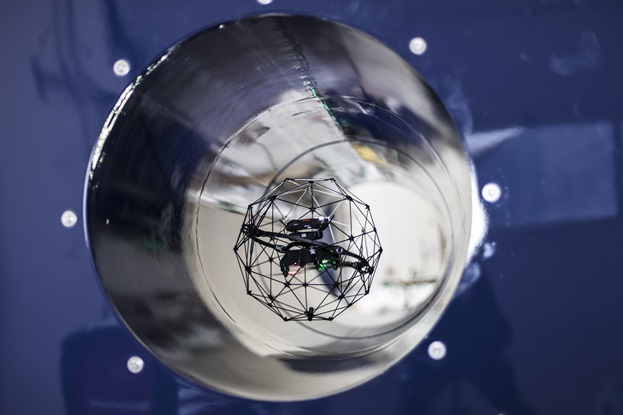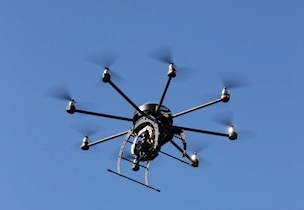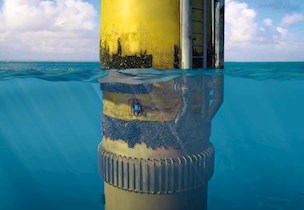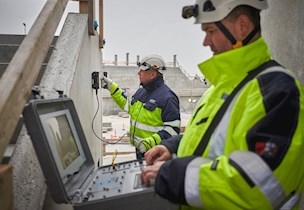Drone inspection of food industry production facilities
Drones are ideal alternatives when it comes to performing cost-intensive tasks in the food industry e.g. provide visual overview of the production site, carry out condition control, perform leakage detection and cleaning validation of equipment.
An increasing number of companies are using drone technology for visual inspection, as it is a cost-conscious and effective way to inspect at heights and inaccessible areas.
The use of drones offers advantages such as:
- quick overview of the production site and the state of the equipment
- sharp and detailed images and video of defects and failures
- data and insights useable in the maintenance planning
- access to hard to reach areas
- reduced downtime and optimised production
- high level of safety.
Drones are ideal for indoor inspection of pipe systems, confined spaces (tanks, boilers) and large silos. Getting, having and keeping a detailed outline of the piping and tank supply on large production sites can be difficult tasks as production lines continuously are adapted to new output ratios, which can result in a change of the piping.
Once the overview of the piping is lost, it is difficult to reestablish because of limited access to pipes and tanks, e.g. piping located up under the ceiling. Small drones in protective grid covers are one way of reaching areas inaccessible to humans and without damaging the surrounding piping and equipment.

Leak detection and welding control
Finding the leak in leaky cooling and heating jackets in tall tanks and silos is problematic to say the least. Drones equipped with thermographic cameras makes the process of finding leakages safe, fast and easy. Also 20 meters above the ground.
Furthermore, bad weldings, cracks and defects at the top of the tank both inside and outside can also be detected by a drone equipped with a high-resolution camera.
Cleaning validation
If the cleaning is insufficient, there is a risk that biofilm or contamination from the surroundings will be present on the production equipment. Such coating can amass at inaccessible areas high above ground, in hollow spaces and cavities or where the cleaning is inadequate because of defective CIP nozzles. In these cases, a visual assessment is very difficult and UV-lighting is needed.
Drones equipped with UV-lighting and a high-resolution camera can provide an entirely new perspectives on where and how frequently an inspection should be performed.
Only experts ought to analyse data
During the aerial inspection, a FORCE Technology pilot operates the drone. During the flight, our certified NDT personnel usually operate the camera, record video and direct the pilot to the points of special interest and views of different angles of the construction.
Under normal circumstances, the drone inspection itself is quickly finished. The heavy workload lies in the analysis of the collected data, and the pictures and video taken by the drones. It is essential here to enlist relevant experts in analysis to obtain the full value from a drone inspection.
Someone lacking the necessary qualified experience may overlook a critical defect or fault, possibly with fatal consequences. For instance, an inspection concerning a steel construction requires an expert metallurgist to analyse and interpret the data.
An inspection report is produced, based on the analysis of this data, and is usually divided into categories of red, yellow and green priority according to the seriousness of the damage. This report can if needed include a service plan, with recommendations to cost-effective improvements.
At FORCE Technology, we only use drones when we conclude that it is the optimal solution. Based on our extensive experience with and knowledge of all types of inspections, we always offer the best solution, tailored made for the job – with or without a drone.




